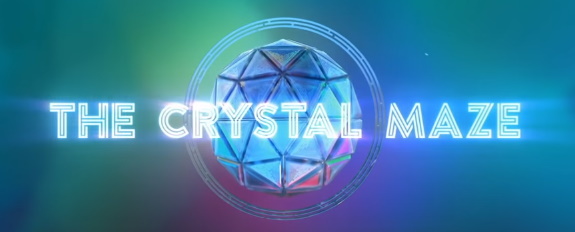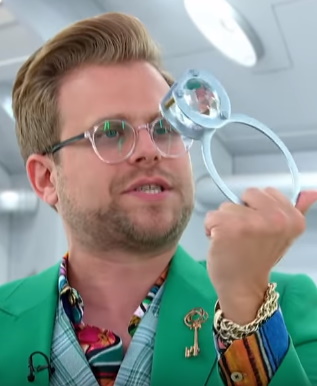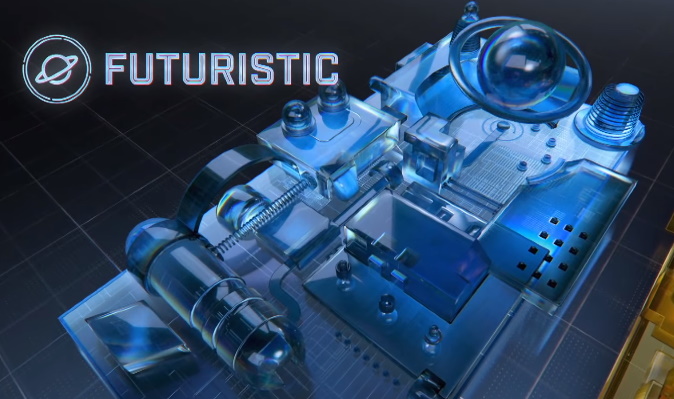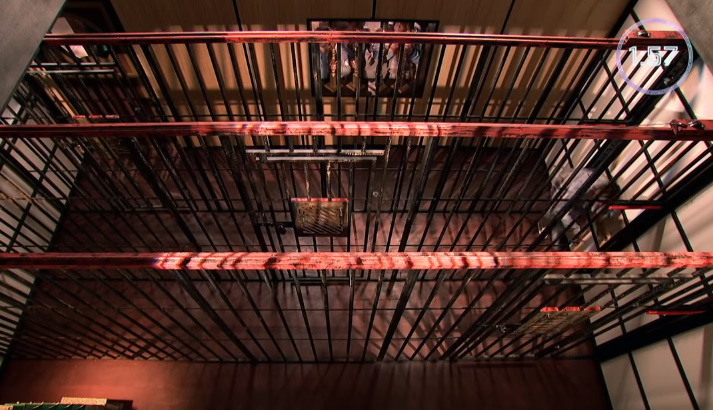Thoughts on the US version

Nearly exactly 30 years after the broadcast of the first episode in 1990, The Crystal Maze made it to the US! Nickelodeon's take on the maze is filmed on the UK set and is hosted by Adam Conover, who is most recognizable from being the face of the show Adam Ruins Everything. Given that - as well as the long and consistent history of america adapting things from the UK to their own market by making them slightly worse - you might be rather nervous about watching what Nickelodeon did to the Crystal Maze, but the release of the first episode in a special preview on Youtube has defied tradition in a big way.
When it was announced last year, Crystal Maze US was sold much more as a family-oriented game show than the UK version, which originally just starred a group of strangers but was changed to groups of people who somehow know each other in the 2017 revival. Instead, the US version has families of two adults and three children competing together, with one of the children taking the role of team captain to decide who's playing each game. If the pattern from the first episode holds, it seems like they're going to do one game with each parent and then have the children play two each.
This brings the total games played per episode to eight, which is two down from the UK format's usual 10 games. But Crystal Maze US manages to perform some strange manipulation of time here, because despite having the same 45-minute runtime as in the UK for fewer games, the show moves a lot faster. The long intro section and maze entrance game have been done away with - we're into playing a game exactly two minutes after the opening with no messing about, and it's great. Rules such as automatic lock-ins are explained during the games through voiceovers or graphical overlays instead of by the mazemaster directly to the contestants.
 The games are an all-star remix of challenges from the last several series of the UK version (which really messes my database up, let me tell you). A couple of them have had some changes, though it's hard to tell if these were decided on for the US version specifically or if when they were taken out of the basement and set up a second time the crew just decided that some things worked better that way. The opening game with the buzz laser grants the contestants 30 more seconds and two more lives than it originally did - and in general you see a few additions to the staging in the game rooms all round. The only "new" game played in the first episode was a recreation of the jail with the crushing walls, transplanted to the Eastern zone from the now retired castle.
The games are an all-star remix of challenges from the last several series of the UK version (which really messes my database up, let me tell you). A couple of them have had some changes, though it's hard to tell if these were decided on for the US version specifically or if when they were taken out of the basement and set up a second time the crew just decided that some things worked better that way. The opening game with the buzz laser grants the contestants 30 more seconds and two more lives than it originally did - and in general you see a few additions to the staging in the game rooms all round. The only "new" game played in the first episode was a recreation of the jail with the crushing walls, transplanted to the Eastern zone from the now retired castle.As the mazemaster, Adam does a reasonable job in the first episode. He certainly looks the part - the crazy lopsided hair, pea-green suit, key on the lapel and wearing of two or three loud shirts at the same time give him the aesthetic of a lost Time Lord. However, I'm not sure that I've really identified a personality to him yet. The two Richards exist at opposite ends of a scale - as a child I could completely believe (and frankly I still do) that Richard O'Brien lived in a mediaeval castle building fiendish tests of skill and brainpower to challenge his visitors, whereas Ayoade's mazemaster is a perpetually uncomfortable introvert who never makes any pretence that he's doing anything other than guiding a group of people nobody's heard of around a set made out of polystyrene and corrugated cardboard. Adam isn't either of these - he guides the family through the maze with the optimistic enthusiasm of a youth group leader, always on their side and encouraging them through both wins and losses. I also found it a bit weird that the crystals, played up as precious and barely obtainable, are casually tossed off-screen once acquired!
 The graphics throughout the programme have been given a fresh coat of paint, and it's an improvement across the board. I love the maze-textured crystal in the new titles, and the typeface which is carried through the rest of the show. The maps, which in the UK had a plain retro style that called back to the graphics that Channel 4's fastest BBC Micro could produce in the 90s, are now glossy reflective renders. And the Knightmare game in the futuristic zone was particularly interesting in that not only had it been updated from the cheesy "virtual reality" graphics of the UK game, but that a couple of the obstacles had been replaced - the circular saw that runs along the far side of the player's starting island has been replaced with a second set of lasers, perhaps a decision made in the name of family friendliness in a country where being canonically killed in the course of a children's game show is a bit rarer.
The graphics throughout the programme have been given a fresh coat of paint, and it's an improvement across the board. I love the maze-textured crystal in the new titles, and the typeface which is carried through the rest of the show. The maps, which in the UK had a plain retro style that called back to the graphics that Channel 4's fastest BBC Micro could produce in the 90s, are now glossy reflective renders. And the Knightmare game in the futuristic zone was particularly interesting in that not only had it been updated from the cheesy "virtual reality" graphics of the UK game, but that a couple of the obstacles had been replaced - the circular saw that runs along the far side of the player's starting island has been replaced with a second set of lasers, perhaps a decision made in the name of family friendliness in a country where being canonically killed in the course of a children's game show is a bit rarer.There are only a couple of little americanisms that really stick out. The first is the placement of the adverts - The Crystal Maze has four zones, there have to be three advert breaks, and the UK version does what any reasonable person would do and puts the breaks in as the players are travelling from one zone to another. The US version instead opts for cutting to commercial breaks towards the climax of games - which is meant to be all dramatic to keep the viewer hooked to come back and see the outcome, but in a programme that raises your blood pressure as much as the Crystal Maze already does, it can tip into infuriating. It also means that if you're watching it without breaks you relive twenty seconds or so of whatever game is being played, but thankfully we're spared the usual "Coming up" and "Previously on" sections that plague american television and can make you essentially watch the same entire programme twice in slightly different orders.
 The second americanism is the concentration on the human experience and overcoming of challenges, as in the post-game interviews where Adam has to prompt the contestants to answer such ridiculous questions as how it felt to be spinning around a room covered in buttons on a rope swing. I don't think there's any possible response to these that would really add to the show, but they don't quite get in the way enough to take away from it either. It gets a bit more obvious when the family is waiting outside the crystal dome and the parents are prompted to make a little speech about how they're so proud of their family for working together and overcoming the maze. The UK version doesn't care about your feelings - we just poke you into the crystal dome with a broom and start the fans going.
The second americanism is the concentration on the human experience and overcoming of challenges, as in the post-game interviews where Adam has to prompt the contestants to answer such ridiculous questions as how it felt to be spinning around a room covered in buttons on a rope swing. I don't think there's any possible response to these that would really add to the show, but they don't quite get in the way enough to take away from it either. It gets a bit more obvious when the family is waiting outside the crystal dome and the parents are prompted to make a little speech about how they're so proud of their family for working together and overcoming the maze. The UK version doesn't care about your feelings - we just poke you into the crystal dome with a broom and start the fans going.And that brings us to the last, and possibly biggest difference of the programme - the tacky prizes that the Crystal Maze has always been known for have been done away with in favour of a $25,000 grand prize. The scoring works by adding $100 to the family's score for every gold token collected, subtracting the same for every silver token collected, and awarding the full prize to a family whose total from that calculation comes to $10,000 or more (it wasn't quite clear from the explanation of the rules, but having just collected 100 gold tokens isn't enough to get the bonus).
 American shows play with money a lot more than British ones do - I remember being surprised on seeing the original US version of Double Dare that money is used as score on that as well, which would be unheard of for a children's show in Britain. And this is just a slightly sad theory, but I've always wondered if that's because the US has much less of a social safety net and it's a place where an unexpected health issue or just going to university can really put you in a hole for life, so being awarded money has even more value. But let's not distract from the episode ending on a happy note, because our inaugural family the Blairs go home with $7,400, are absolutely ecstatic and pull Adam into a group hug that would have made Ayoade die of embarrassment.
American shows play with money a lot more than British ones do - I remember being surprised on seeing the original US version of Double Dare that money is used as score on that as well, which would be unheard of for a children's show in Britain. And this is just a slightly sad theory, but I've always wondered if that's because the US has much less of a social safety net and it's a place where an unexpected health issue or just going to university can really put you in a hole for life, so being awarded money has even more value. But let's not distract from the episode ending on a happy note, because our inaugural family the Blairs go home with $7,400, are absolutely ecstatic and pull Adam into a group hug that would have made Ayoade die of embarrassment.It's interesting to see the differences, but it works very well through leaving the format mostly alone, and I'm looking forward to cataloguing the US results as soon as I rewrite the entire backend of the site to accommodate it.